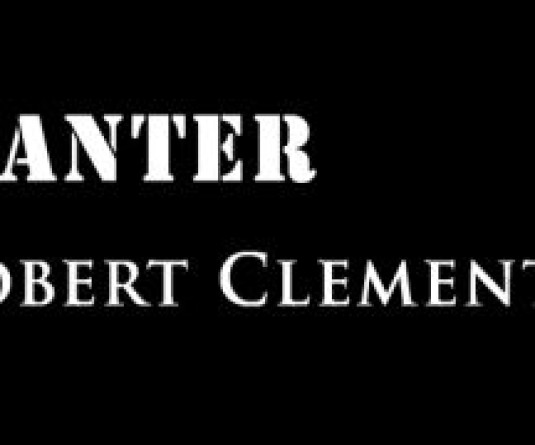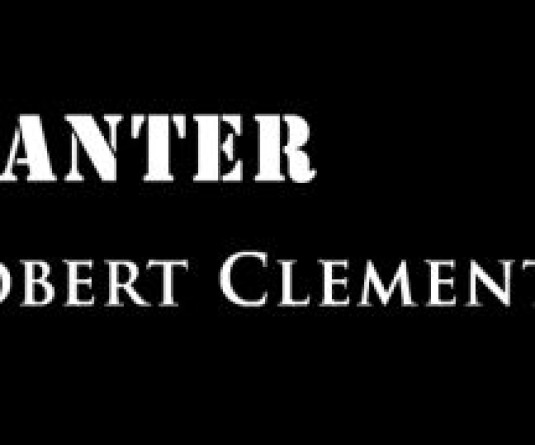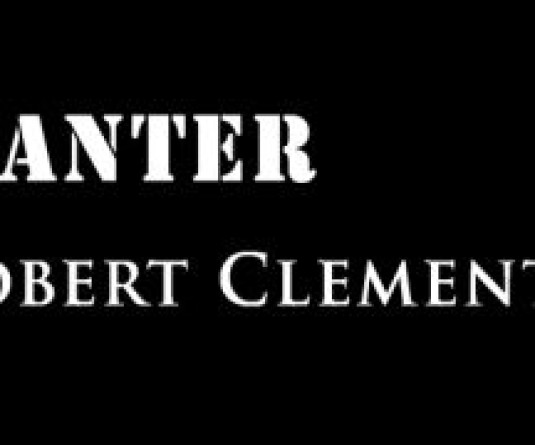1
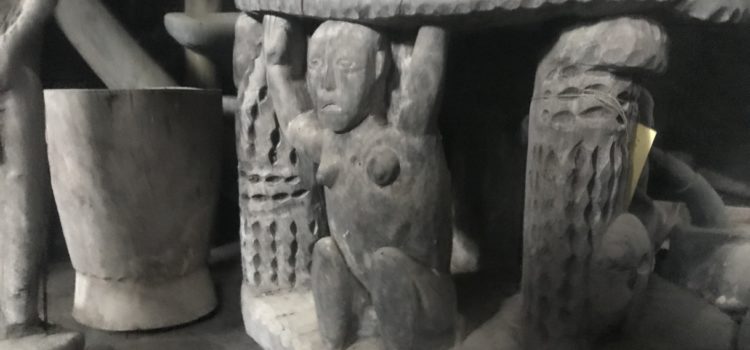
A part of Belho’s collection at his “haunted” storehouse
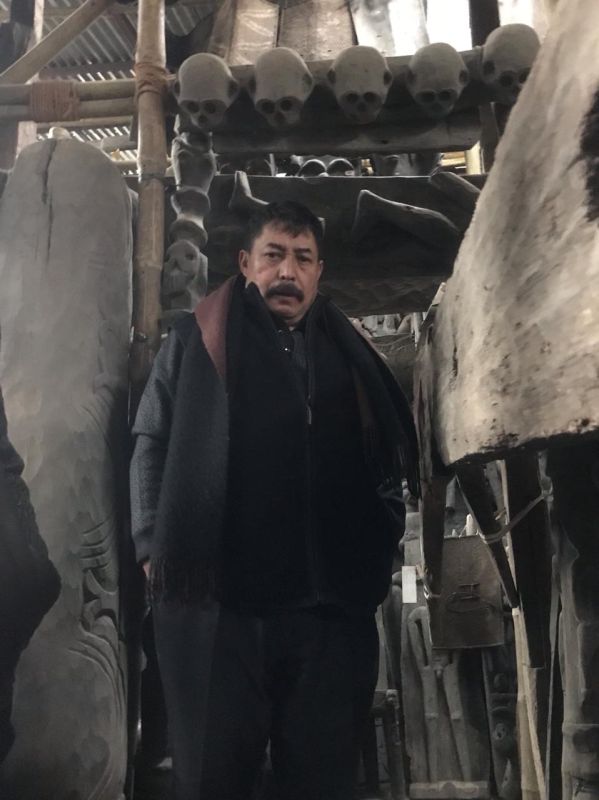
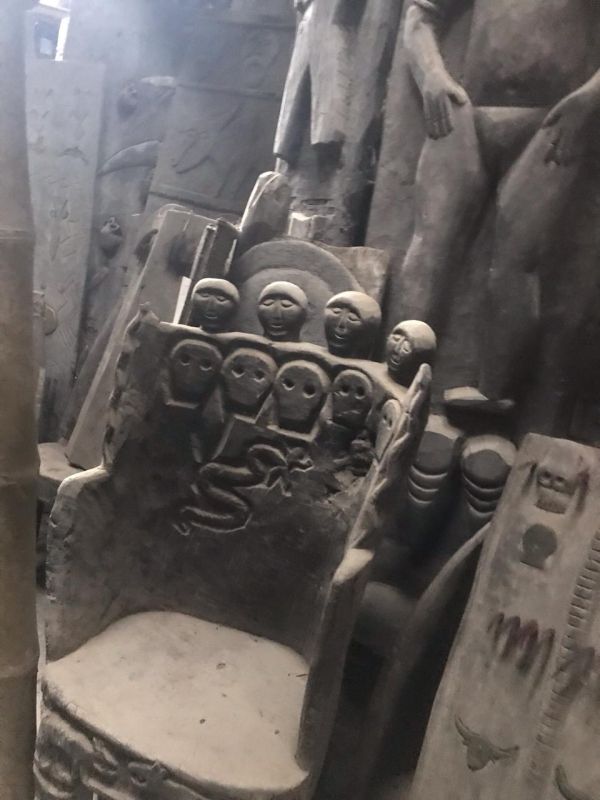
Nona Arhe
East Wind
Standing amidst piles of historic Naga wood carvings and sculptures Francis Phrezo Belho proclaimed, with every word spontaneously accompanied with a hand gesture – ‘this is nothing, this is nothing! The best of Naga antiques and artifacts had already been smuggled out of the State in the ’80s and ’90s. What I have here is the remnants of the last few items that could not be smuggled out’.
The surroundings speak otherwise. Mr. Belho possesses an extraordinary collection of over 10,000 items including wood and metal objects, ornaments, textiles and wartime weapons, mostly belonging to the Angami, Ao and Konyak Naga tribes. At present, these collections are stored in a large one-room makeshift shed in their family garden. The tin roof shed has no windows, but the right amount of light gets in from the holes of the old tin walls.
Leading me into the different compartments of his collections, segregated by wooden panels in the form of one-piece woodcarving doors, community gates and wood planks, Francis said, ‘my intention of collecting and preserving these items is for the future Naga generations. These are priceless intellectual items that hold historical significance to our Naga identity. We cannot afford to lose any more of these items; we need awareness in preserving our cultural heritage. This collection is my humble attempt to sensitize our people about our rich past’.
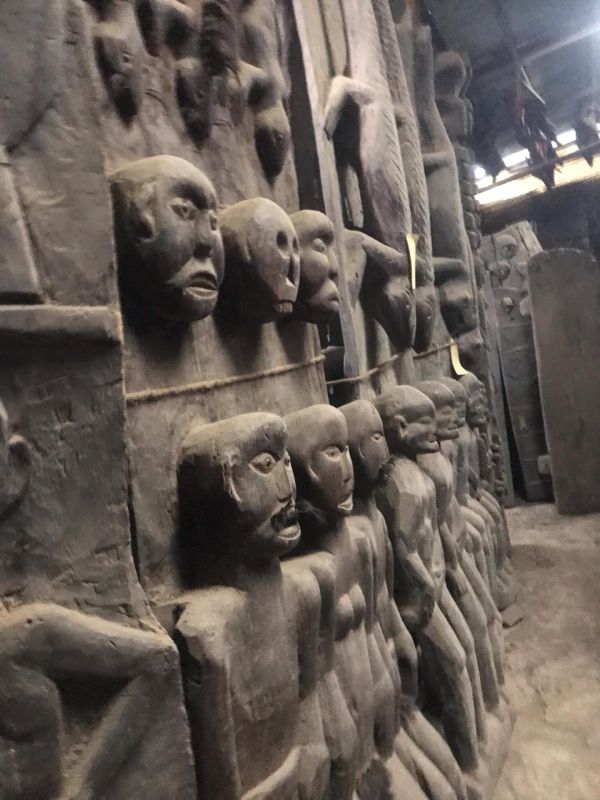
Belho’s collection is possibly the largest private collection of Naga artifacts. “It started with my father, late. Raneilie Belho, who was a collector of all kinds of stuff” he says. “His collections included some rare memorabilia from the Second World War, which he had to eventually surrender to the then Deputy Commissioner when Nagaland got its statehood. My father was also an artist himself. He had a vast interest in woodcarvings. In his later years, we set up a small art gallery in our front yard where a few wood and metal-carving artists worked under his supervision. What was heartening is that, even with a modest gallery, Government officials would regularly visit with state guests’.
After his father passed away, Belho went through his collections. “And that was when it piqued my interest. The first item I bought was a metal sculpture from the Konyak Naga tribe for twelve thousand rupees. As the word spread about my interest and my collections, villagers from different parts of the State came to me with a variety of items, including pottery, furniture, pieces of jewellery and textiles. These items were in wood, cane, metal and clay, some dating back over a century ago” he says.
Lamenting on losing some of the most exquisite Naga antiques and artifacts, Mr. Belho said “in the 1980s and up to the mid-’90s, people in the villages did not know the value of the old artwork they had in their homes. Most of them were just happy with a meagre amount for getting rid of their old possessions. Those days it was the Tibetans and a few local businessmen and women who visited these areas extensively and bought most of the valuable items, including some masterpieces, and sold it to foreigners and art collectors in Delhi and elsewhere.”
Before he got himself dipped fully into collecting these antique Naga treasures, Francis Phrezo Belho ran several successful businesses. However, once his collections increased, he began to find himself spending less and less time with his other trades, as each item in his collections went through passionate attention to detail and careful selection. There was a time when villagers would send him truckloads of items. He would have to scrutinise each piece. “I soon realized that not all the items were genuine” he says.
With the rapid loss of ancient Naga practices, Mr. Belho strongly believes in the need and urgency to preserve and exhibit these items to the Nagas more than to outsiders. Possessing some significantly original Naga antiques and artifacts in his collections, he realized how each of these items holds essential meaning and significance to Naga history and identity. He also realized that the best means for him to share these objects with the rest of the Nagas, especially for future generations, is by setting up an ethnographic museum.
“At one point in time, I was almost obsessed, thinking if I do not buy an item, it may go out of the State, and like many items that we have already lost, we may never recover it again. I went on a buying spree for a couple of years, and that took a huge financial constraint on my other businesses. Nevertheless, my intention and mission remained steadfast – that we must value our rich Naga heritage of which these pieces of artwork are a part”.
Francis Phrezo Belho went through his lowest ebb in the mid-2000s. He had spent lakhs of rupees on his quest to preserve Naga antiques and artifacts. He soon found himself heavily indebted. His effort to find a funder to set up a privately funded heritage museum proved futile. “A few international funding agencies showed keen interest to help me set up the museum. In fact, with one, we made quite a bit of progress, but unfortunately, that too fizzled out. Over the years many dignitaries from India and some from abroad have seen my collections. Most of them are amazed at the number of items I have amassed over the years. Some even showed genuine interest and encouraged me to preserve these items and promised to help me set up a proper place to display these Naga historical objects. Still, unfortunately, nothing has materialized so far” he says.
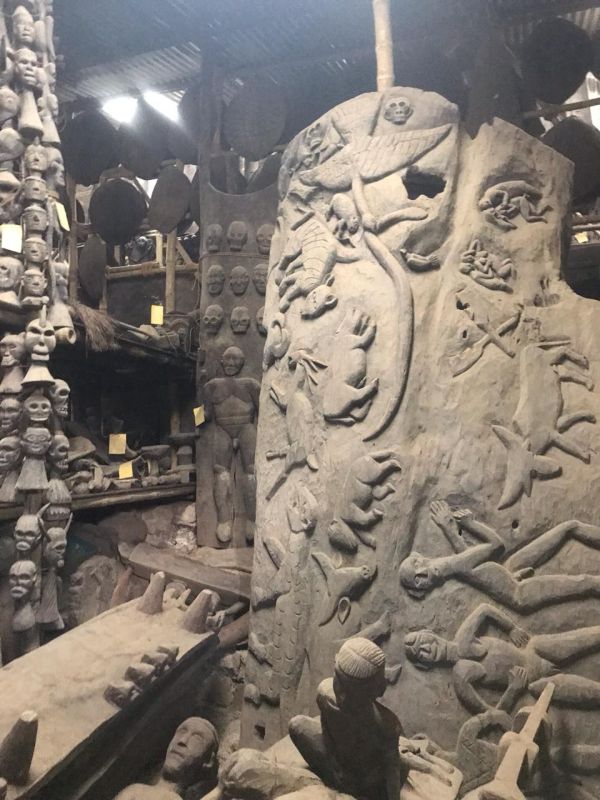
With no existing financial assistance from anywhere, Mr. Belho’s collections are going through a challenging period. “The expenses of upkeep and maintenance of woven fibres, wood and cane items are quite demanding and they urgently need climate-controlled spaces. With Kohima’s extreme wet weather, these objects require regular cleaning and polishing, as moisture is the main cause of most corrosion. We need not just the resources to maintain them, but also need professional conservators with the knowledge of handling cultural items. Right now, I have neither, and that is my biggest worry” says Belho.
Another severe threat that worries him is the safety of his possessions. “I have lost a few very significant objects due to the inability to store them safely and properly. Initially, I used to store them in one of the rooms in our house, and then with more and more collections, it had spread to the other rooms. Subsequently, it was everywhere – my office, corridors of the house, storerooms, everywhere possible, creating much inconvenience to the rest of the family members.”
The makeshift storage shed was built about four years ago to keep the large items stored together and categorize them accordingly to the size and objects. “Even though the shed was built with modest materials, at least for now, it is in a safe environment. The most helpful assistance came from the most unexpected source – an old coffin belonging to an infant, which was dug out from the grave for its unique artwork. Being around the coffin created quite a stir among the workers; they claimed an unseen object terrorizing them and followed them around until they leave the shed. Eventually, one of my main employees, in-charge of the wooden objects fled because of the haunted casket. After the news had spread, there was not a single incident of theft. I have not experienced it personally, but I am glad, the spirit is taking charge of the security of these priceless items” he says.
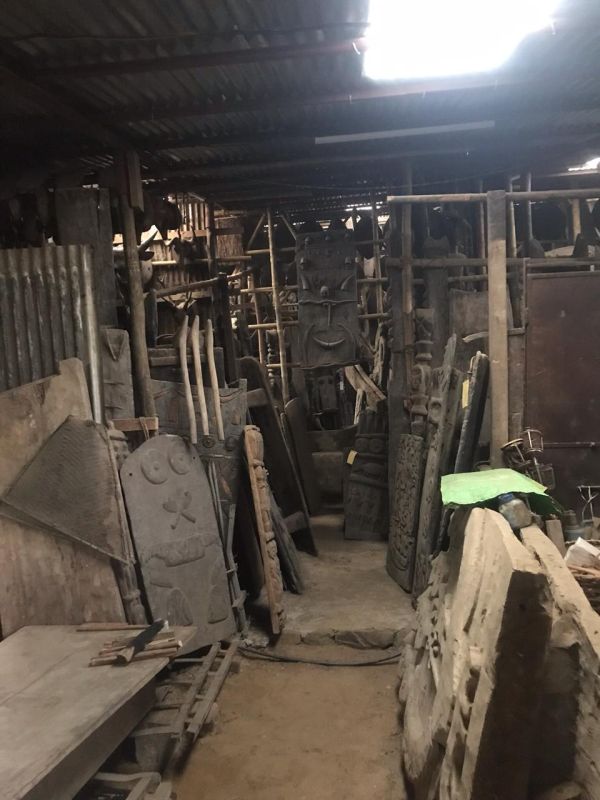
Of all the items that are missing, Belho said, he hopes to retrieve one of the most treasured items from his collection. “It is a wooden statue of an Angh (traditional village chief) in a sitting position. Those days, even in the absence of the Angh, villagers would leave their alms at the feet of the statue. That item was such a unique and rare treasure; it was a matter of pride and honour to have in my collection.”
At present, there are stacks of Naga history and culture, locked up, literally, in a temporary shed in Kohima. If proper steps are not taken, these priceless, fragile bits of Naga heritage will rot away. With that, Belho’s one-man mission of decades to save an essential part of Naga culture will crumble to dust because those with the power to help preserve these artifacts did not do so in time.
This article was originally published in East Wind Journal.
http://eastwindjournal.com/2019/11/26/naga-antique-art/


